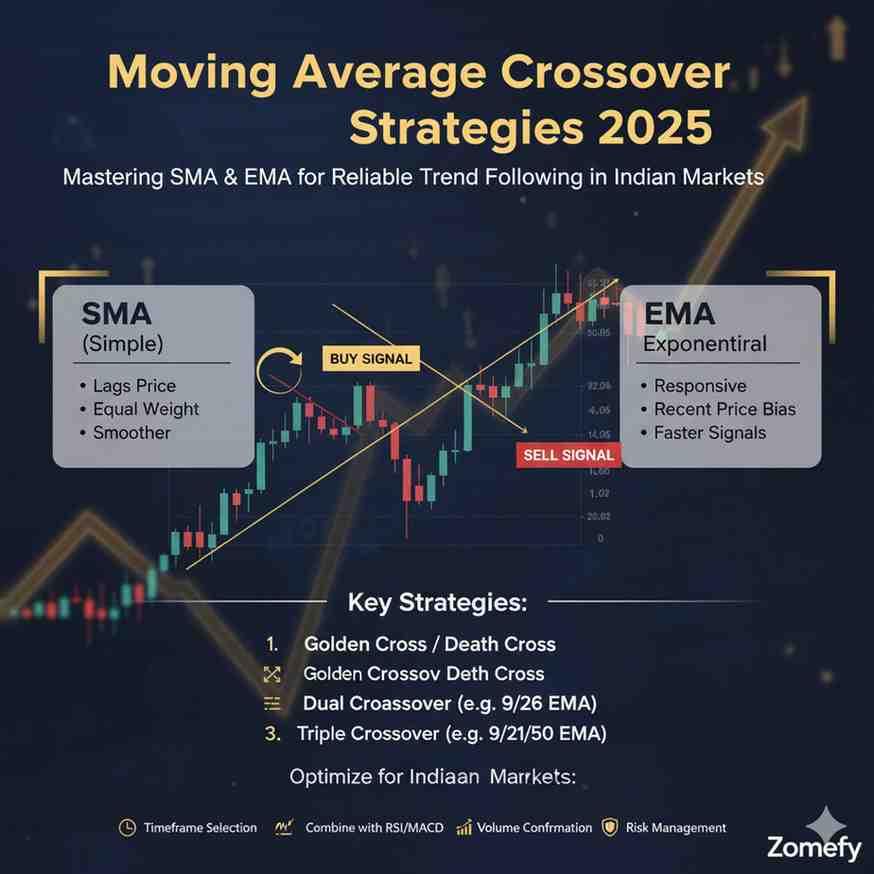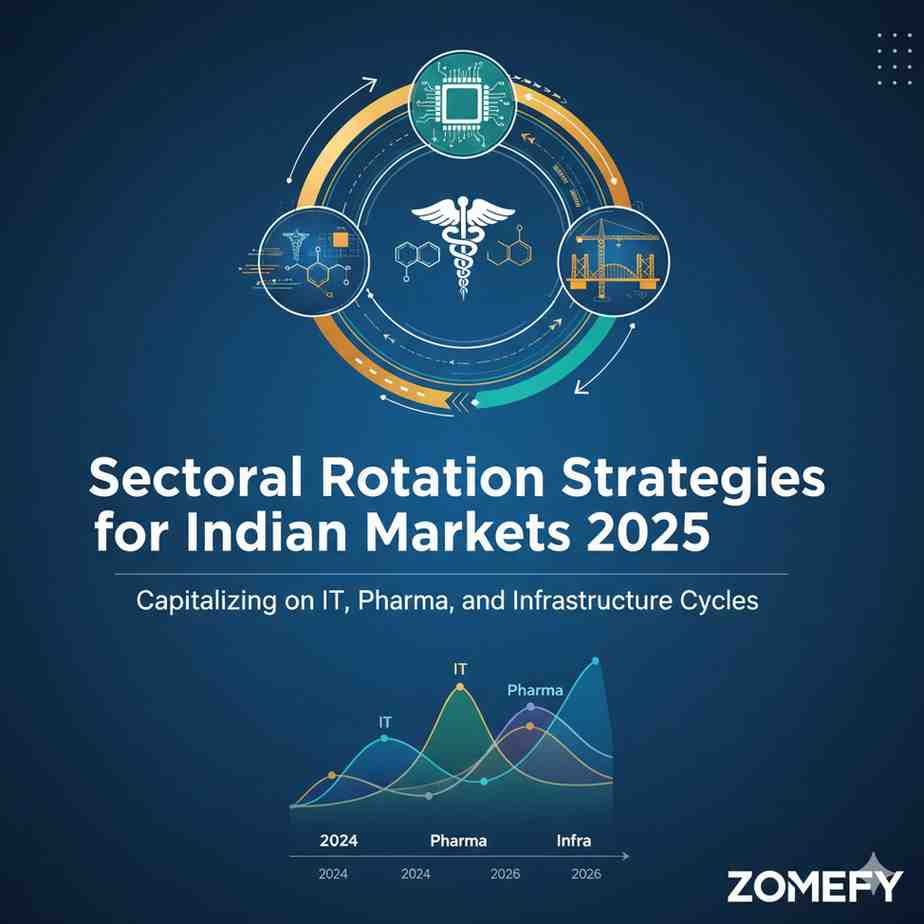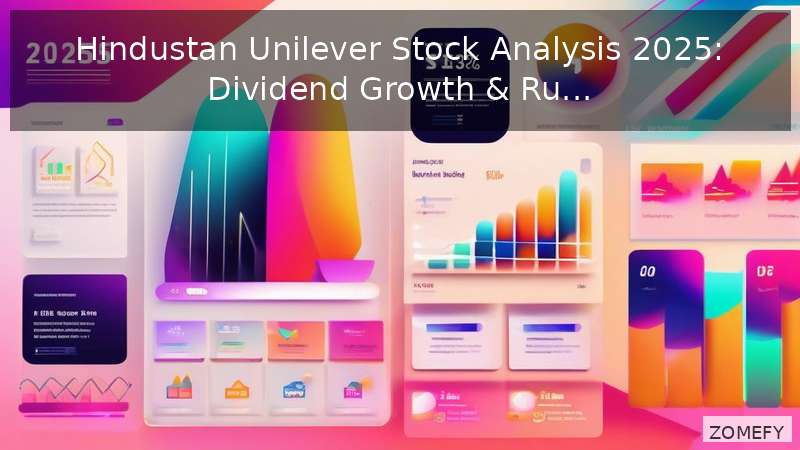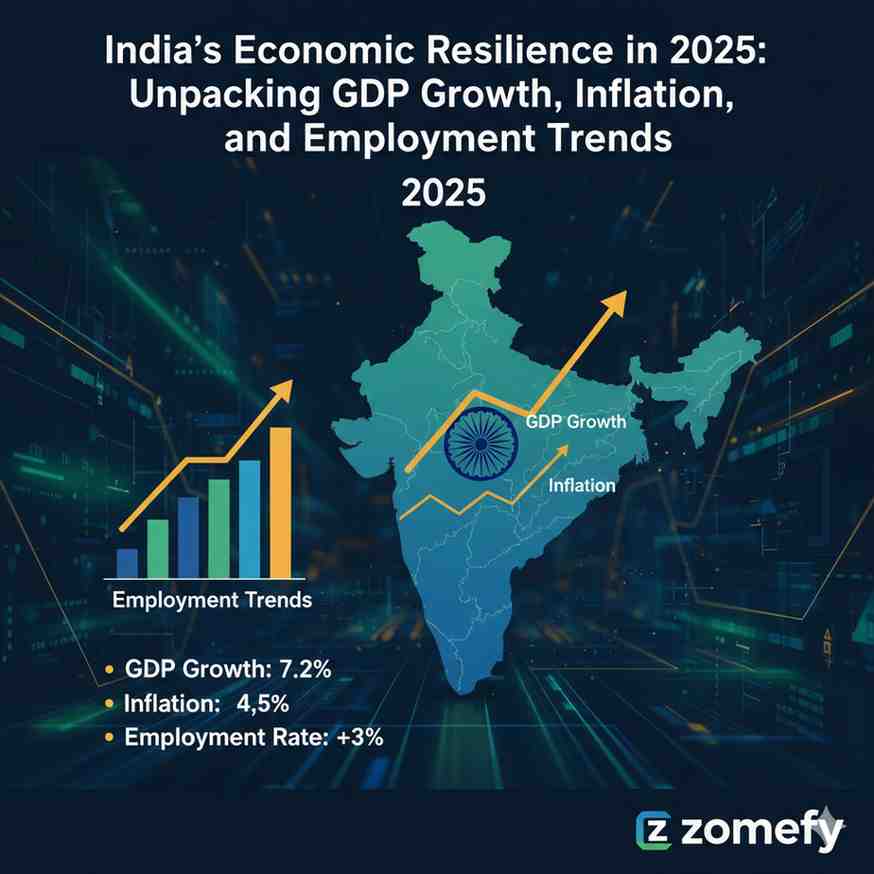How Inflation Shaped Stock Market Returns in India (1980-2025) - Complete Analysis
Complete analysis of how inflation shaped Indian stock market returns from 1980-2025. Decade-wise data, sectoral winners, and strategies to inflation-proof your portfolio.
How Inflation Shaped Stock Market Returns in India (1980-2025) - Complete Analysis
What You Can Do Next
- Read the full article for complete insights
- Save for later reference
- Share with others learning about this topic
Image not available
From the double-digit inflation of the 1970s-80s to the RBI's current 4% target, India has experienced dramatic shifts in price levels. How did these inflation cycles impact Sensex returns? Which sectors thrived during inflationary periods? And most importantly, how can investors protect their portfolios from inflation's wealth-eroding effects?
This comprehensive analysis covers 45 years (1980-2025) of inflation and stock market data, revealing patterns that every Indian investor must understand.
Understanding Inflation & Its Types
Before diving into historical data, let's clarify what inflation means and why it matters for investors.
What is Inflation?** Inflation is the rate at which the general price level of goods and services rises, eroding the purchasing power of money. If inflation is 6% annually, ₹100 today will buy goods worth only ₹94 next year.
How is Inflation Measured in India?
Type | Rate | Impact on Markets |
|---|---|---|
| **Deflation** | <0% | Negative (demand collapses, profits fall) |
| **Low Inflation** | 0-3% | Neutral to Positive (stable, predictable) |
| **Moderate Inflation** | 3-6% | **Positive** ("Goldilocks" - not too hot, not too cold) |
| **High Inflation** | 6-10% | Mixed (profits squeezed, interest rates rise) |
| **Hyperinflation** | >10% | Negative (currency devaluation, capital flight) |
Inflation vs Sensex: 45-Year Overview (1980-2025)
Let's examine how inflation and Sensex returns have moved together over the past 45 years.
Period | Avg CPI Inflation (%) | Sensex Start | Sensex End | Sensex CAGR (%) | Real Return (Sensex - Inflation) |
|---|---|---|---|---|---|
| 1980-1985 | 8.2% | ~200 (est) | ~600 (est) | 24.6% | **+16.4%** |
| 1986-1990 | 8.5% | 100 | 1,001 | 58.4% | **+49.9%** |
| 1991-1995 | 10.3% | 1,908 | 3,110 | 10.3% | **0%** |
| 1996-2000 | 7.2% | 3,085 | 3,972 | 5.2% | **-2.0%** |
| 2001-2005 | 4.3% | 3,972 | 9,398 | 18.8% | **+14.5%** |
| 2006-2010 | 7.8% | 9,398 | 20,509 | 16.9% | **+9.1%** |
| 2011-2015 | 8.9% | 15,455 | 26,118 | 11.1% | **+2.2%** |
| 2016-2020 | 4.5% | 26,626 | 47,751 | 12.4% | **+7.9%** |
| 2021-2025 | 5.8% | 58,254 | 83,184 | 11.8% | **+6.0%** |
3. Real Returns (After Inflation) Are What Matter
The 1990s: High Inflation, Mixed Returns
The 1990s were India's most transformative decade economically, but inflation remained stubbornly high.
Year | CPI Inflation (%) | Sensex (Year-End) | Annual Return (%) | Major Event |
|---|---|---|---|---|
| 1990 | 9.0% | 1,001 | +62.2% | Pre-liberalization boom |
| 1991 | 13.9% | 1,908 | +90.5% | Liberalization announced |
| 1992 | 11.8% | 2,281 | +19.5% | Harshad Mehta scam crash |
| 1993 | 6.4% | 2,443 | +7.1% | Reforms continue |
| 1994 | 10.2% | 3,342 | +36.8% | Economic recovery |
| 1995 | 10.2% | 3,110 | -6.9% | RBI tightening to curb inflation |
| 1996 | 9.0% | 3,085 | -0.8% | Political instability |
| 1997 | 7.2% | 3,658 | +18.6% | Asian Crisis impact |
| 1998 | 13.2% | 3,055 | -16.5% | Pokhran tests, rupee crisis |
| 1999 | 4.7% | 5,006 | +63.9% | Tech boom |
| 2000 | 4.0% | 3,972 | -20.6% | Dot-com crash |
Sector | Performance | Reason |
|---|---|---|
| **Banking** | ⬆️ Strong | Deregulation, higher lending rates = better NIMs |
| **Commodities** | 🚀 **Outperformer** | Inflation pass-through (metals, cement) |
| **FMCG** | ⬇️ Weak | Consumer spending squeezed |
| **IT Services** | 🚀 **Explosive** | Rupee depreciation, Y2K demand |
| **Real Estate** | ⬆️ Moderate | Inflation hedge, but high interest rates hurt |
| **Auto** | ⬇️ Weak | High interest rates killed demand |
High inflation doesn't doom stock returns if accompanied by structural reforms and corporate profit growth. But it does create volatility and sector dispersion—stock picking becomes critical.
The 2000s: Moderate Inflation, Strong Returns
The 2000s saw India's inflation moderate (except 2008-10 spike) and markets deliver double-digit returns.
Year | CPI Inflation (%) | Sensex (Year-End) | Annual Return (%) | Major Event |
|---|---|---|---|---|
| 2001 | 3.7% | 3,262 | -17.9% | Dot-com bust, Ketan Parekh scam |
| 2002 | 4.3% | 3,377 | +3.5% | Recovery begins |
| 2003 | 3.8% | 5,839 | +72.9% | FII inflows surge |
| 2004 | 3.8% | 6,603 | +13.1% | UPA surprise win |
| 2005 | 4.2% | 9,398 | +42.3% | India growth story |
| 2006 | 5.8% | 13,787 | +46.7% | Real estate boom |
| 2007 | 6.4% | 20,287 | +47.2% | Peak bull run |
| 2008 | 8.4% | 9,647 | -52.5% | Global financial crisis |
| 2009 | 10.9% | 17,464 | +81.0% | Stimulus-driven recovery |
| 2010 | 12.0% | 20,509 | +17.4% | Inflation worries surface |
Sector | Performance | Reason |
|---|---|---|
| **Real Estate** | 🚀 **5x gains** | Low rates, easy credit, urbanization |
| **Banking** | 🚀 **4x gains** | Retail credit boom, low NPAs |
| **IT Services** | 🚀 **3x gains** | Outsourcing boom, rupee stable |
| **Infrastructure** | 🚀 **6x gains** | Govt capex, PPP projects |
| **FMCG** | ⬆️ Moderate (2x) | Stable growth, defensive |
| **Metals/Commodities** | 🚀 **8x gains** | Global commodity super-cycle |
Sector | Performance | Reason |
|---|---|---|
| **Gold** | 🚀 **Outperformer** (+60%) | Inflation hedge |
| **Pharma** | ⬆️ Resilient (+30%) | Defensive, export-driven |
| **FMCG** | ⬆️ Resilient (+25%) | Essential goods, pricing power |
| **Banking** | ⬇️ Weak (-20%) | NPA fears, rate hike worries |
| **Real Estate** | ⬇️ **Crash** (-50%) | Credit crunch, high EMIs |
| **Auto** | ⬇️ Weak (-30%) | Demand destruction |
Low, stable inflation (3-6%) is the best environment for equities. But even high inflation periods (2009-10) can deliver returns if driven by recovery stimulus rather than structural issues.
The 2010s: Inflation Tamed, Returns Moderated
The 2010s saw RBI under Dr. Raghuram Rajan (2013-16) and Urjit Patel (2016-18) aggressively target inflation.
Year | CPI Inflation (%) | Sensex (Year-End) | Annual Return (%) | Major Event |
|---|---|---|---|---|
| 2011 | 8.9% | 15,455 | -24.6% | High inflation, policy paralysis |
| 2012 | 9.3% | 19,427 | +25.7% | Hope for reforms |
| 2013 | 10.9% | 21,170 | +9.0% | Taper Tantrum, rupee crash |
| 2014 | 6.4% | 27,499 | +29.9% | Modi election, inflation falls |
| 2015 | 4.9% | 26,118 | -5.0% | Global slowdown |
| 2016 | 4.5% | 26,626 | +1.9% | Demonetization |
| 2017 | 3.3% | 34,057 | +27.9% | GST, Jio disruption |
| 2018 | 3.9% | 36,068 | +5.9% | NBFC crisis |
| 2019 | 4.8% | 41,254 | +14.4% | Corporate tax cuts |
| 2020 | 6.6% | 47,751 | +15.8% | COVID, supply shock inflation |
Period | High Inflation (2011-13) | Low Inflation (2014-20) |
|---|---|---|
| **FMCG** | ⬆️ Defensive winner (+30%) | ⬆️ Steady (+80%) |
| **Pharma** | 🚀 **Outperformer** (+120%) | ⬆️ Moderate (+60%) |
| **Banking** | ⬇️ NPA crisis (-10%) | 🚀 **Recovery** (+150%) |
| **IT Services** | ⬆️ Rupee depreciation benefit (+40%) | ⬆️ Moderate (+70%) |
| **Auto** | ⬇️ Demand hit (-20%) | ⬆️ Recovery (+90%) |
| **Metals** | ⬇️ Global slowdown (-30%) | ⬆️ China demand (+100%) |
Central bank credibility matters. RBI's inflation targeting framework (2016+) reduced uncertainty, allowing markets to focus on growth and earnings rather than macro instability.
The 2020s: Pandemic, Supply Shocks & Rate Hikes
The current decade has seen inflation volatility return due to unprecedented events.
Year | CPI Inflation (%) | Sensex (Year-End) | Annual Return (%) | Major Event |
|---|---|---|---|---|
| 2021 | 5.1% | 58,254 | +22.0% | Liquidity boom, pent-up demand |
| 2022 | 6.7% | 61,168 | +5.0% | Russia-Ukraine war, rate hikes begin |
| 2023 | 5.4% | 72,240 | +18.1% | Inflation cools, growth resilient |
| 2024 | 5.5% | 81,500 | +12.8% | Soft landing achieved |
| 2025 (Oct YTD) | 5.2% | 83,184 | +2.1% | Range-bound, valuation concerns |
Sector | 2021 (Low Inflation) | 2022 (High Inflation) | 2023-25 (Moderating) |
|---|---|---|---|
| **Energy** | -10% (demand worries) | +40% (war premium) | +15% (stable prices) |
| **Banking** | +30% (credit growth) | -5% (NIM pressure) | +25% (NIMs improved) |
| **IT Services** | +40% (digital boom) | -20% (recession fears) | +10% (AI optimism) |
| **FMCG** | +15% (demand recovery) | -10% (margin squeeze) | +12% (pricing power) |
| **Pharma** | +20% (COVID tailwinds) | +15% (defensive) | +18% (US approvals) |
| **Auto** | +35% (pent-up demand) | -15% (chip shortage) | +20% (EV transition) |
| **Real Estate** | +50% (work-from-home) | +10% (rate hike impact) | +25% (luxury demand) |
Inflation shocks (like 2022) create short-term pain but long-term opportunity. Those who stayed invested or added during 2022's weakness profited handsomely in 2023-24.
Inflation-Proof Sectors: Winners Across Cycles
Certain sectors consistently outperform during high inflation. Here's the historical data:
Sector | Avg Return (High Inflation Years) | Why? |
|---|---|---|
| **1. Gold/Precious Metals** | +15-20% CAGR | Ultimate inflation hedge, currency devaluation protection |
| **2. Commodities (Oil, Metals)** | +12-18% CAGR | Direct beneficiaries of rising prices |
| **3. Banking (if NPA-free)** | +10-15% CAGR | Higher lending rates = better Net Interest Margins |
| **4. Pharma** | +12-15% CAGR | Export-driven, rupee depreciation helps, essential goods |
| **5. FMCG (with pricing power)** | +8-12% CAGR | Essential goods, ability to pass costs to consumers |
| **6. Real Estate (early cycle)** | +10-20% CAGR | Tangible asset, inflation pass-through |
| **7. Infrastructure/Cement** | +8-15% CAGR | Govt spending, commodity linkage |
Sector | Avg Return (High Inflation Years) | Why? |
|---|---|---|
| **1. Auto** | -5% to +5% | High EMIs kill demand, discretionary spending squeezed |
| **2. Consumer Discretionary** | -5% to +5% | Restaurants, apparel, leisure cut first |
| **3. IT Services (export)** | +5-10% | Rupee depreciation helps, but global slowdown hurts demand |
| **4. Real Estate (late cycle)** | -10% to 0% | High interest rates kill affordability |
| **5. Telecom** | -10% to +5% | Capex-heavy, rate hikes increase debt burden |
Stock/Sector | Performance (2011-13) | Strategy |
|---|---|---|
| Sensex (Benchmark) | +2.9% | |
| **Gold** | +35% | 🏆 Inflation hedge winner |
| **Pharma (Sun, Lupin)** | +80-120% | 🏆 Export-driven outperformer |
| **FMCG (HUL, ITC)** | +40-50% | 🏆 Defensive quality |
| **Banking (PSU)** | -20% to -40% | ❌ NPA crisis, avoid |
| **Auto (Tata Motors, M&M)** | -15% to -30% | ❌ Demand destruction |
| **Real Estate** | -40% to -60% | ❌ Rate hike carnage |
During high inflation, shift allocation to: 1. Defensive sectors (FMCG, Pharma) 2. Commodities/Gold (hedge) 3. Quality banks with pricing power
Avoid: 1. Interest rate-sensitive sectors (Auto, Real Estate) 2. Over-leveraged companies 3. Low-margin businesses without pricing power
How to Protect Your Portfolio from Inflation
Asset Class | Inflation Protection | Historical India Data (1980-2025) |
|---|---|---|
| **Equities** | ⭐⭐⭐⭐ Strong | 15-18% CAGR (beats 6-7% inflation) |
| **Gold** | ⭐⭐⭐⭐⭐ Excellent | 10-11% CAGR (direct hedge) |
| **Real Estate** | ⭐⭐⭐ Moderate | 8-10% CAGR (but illiquid) |
| **Corporate Bonds** | ⭐⭐ Weak | 7-8% returns (barely beats inflation) |
| **Bank FD** | ⭐ Very Weak | 6-7% returns (matches inflation, no real gain) |
| **Cash** | ❌ None | 0% returns (loses -6% annually to inflation) |
Inflation Environment | Equity (%) | Gold (%) | Debt (%) | Real Estate (%) |
|---|---|---|---|---|
| **Low (0-3%)** | 70% | 5% | 20% | 5% |
| **Moderate (3-6%)** | 60% | 10% | 20% | 10% |
| **High (6-10%)** | 50% | 20% | 15% | 15% |
| **Hyperinflation (>10%)** | 40% | 30% | 10% | 20% |
Despite 2011-13 inflation crisis, 2020 COVID crash, 2022 rate hike shock, SIP delivered wealth creation.
1. Salary (negotiate annual inflation-linked raises) 2. Dividend-paying stocks (HDFC Bank, ITC, Coal India) 3. Rental income (real estate) 4. Side business/freelancing 5. Royalties/passive income
"My portfolio grew 8% this year, I'm happy!"
If inflation was 7%, your real return is only 1%. You barely beat price rises.
Real Return = Nominal Return - Inflation Rate
Target:
1. Bank Fixed Deposits (real return often negative) 2. Insurance Endowment Plans (4-6% returns lose to inflation) 3. Corporate FDs (7-8% pre-tax, post-tax loses to inflation) 4. Long-term bonds (fixed coupon eroded by inflation)
1. Equity Mutual Funds/ETFs (15-18% long-term CAGR) 2. Gold ETFs/SGBs (10-11% + inflation hedge) 3. Balanced Advantage Funds (dynamic equity-debt mix) 4. Real Estate (if researched well) (8-10% + rental yield)
Future Outlook: Inflation & Markets (2025-2030)
RBI is committed to keeping inflation in the 2-6% band, with a midpoint target of 4%. This is India's "Goldilocks" zone for equity markets.
- 40%: Nifty 50 Index Fund (diversified large cap) - 30%: Mid-cap Fund (growth potential) - 20%: Sectoral play (Banking, IT, Pharma rotation) - 10%: International Fund (US/Developed markets hedge)
- 15%: Gold (SGB or Gold ETF) - 5%: Commodities (Silver, Crude ETF)
- 10%: Short-term Debt Fund (liquidity) - 5%: Balanced Advantage Fund (dynamic allocation)
- Real Estate (if affordable and researched) - Or REIT/InvIT for liquidity
Conclusion
1. Start SIP NOW in Nifty 50 Index Fund (₹10,000-25,000/month) 2. Hold 15% in Gold (SGB or Gold ETF as inflation hedge) 3. Avoid fixed income (FDs, endowment plans lose to inflation) 4. Rebalance annually based on inflation trends 5. Stay invested 10+ years (short-term noise doesn't matter)
Inflation is inevitable in a growing economy. But it's not your enemy—it's a challenge that equities have consistently overcome. Those who understand inflation's patterns and adjust their portfolio accordingly will preserve and grow wealth. Those who hide in fixed income or cash will see their purchasing power erode silently.
The next 5 years (2025-2030) will likely see 4-6% inflation (RBI's target). If you position your portfolio correctly now, you'll look back in 2030 and thank yourself for staying the course.
Frequently Asked Questions
What is the ideal inflation rate for stock market growth?
Historical data shows that moderate inflation of 4-6% is optimal for equity markets. This "Goldilocks zone" allows companies to grow revenues, pass costs to consumers, and maintain profit margins without triggering aggressive central bank rate hikes. India's RBI targets 4% ±2%, which aligns with this ideal range. Periods like 2001-2007 and 2016-2020 with 4-6% inflation delivered 15-18% Sensex CAGR.
How does high inflation affect stock returns?
High inflation (>8%) generally hurts stock returns through multiple channels: 1) Central banks raise interest rates aggressively, making bonds competitive, 2) Corporate profit margins shrink as input costs rise faster than revenue, 3) Consumer demand weakens due to reduced purchasing power, 4) Valuations compress (lower P/E ratios). However, if high inflation is accompanied by strong GDP growth (like 1980s-90s India), equities can still deliver positive real returns.
Which sectors perform best during high inflation?
Does gold or equity protect better against inflation?
How do I calculate real returns after inflation?
Should I change my investment strategy when inflation rises?
What happened during India's highest inflation period?
How does RBI's inflation targeting affect my investments?
Can I lose money in stocks if inflation is too high?
What's the best investment to beat inflation in India?
References
- [1] Consumer Price Index (CPI) Historical Data - Ministry of Statistics and Programme Implementation, Govt of India. View Source ↗(Accessed: 2025-10-04)
- [2] Wholesale Price Index (WPI) Time Series - Office of Economic Adviser, Ministry of Commerce. View Source ↗(Accessed: 2025-10-04)
- [3] RBI Monetary Policy Reports (2000-2025) - Reserve Bank of India. View Source ↗(Accessed: 2025-10-04)
- [4] Sensex Historical Performance Data - Bombay Stock Exchange. View Source ↗(Accessed: 2025-10-04)
- [5] Inflation Targeting in India: Policy Framework - RBI Bulletin. View Source ↗(Accessed: 2025-10-04)
Continue Your Investment Journey
Discover more insights that match your interests

Moving Average Crossover Strategies 2025: Mastering SMA & EMA for Reliable Trend Following in Indian Markets
In the dynamic landscape of Indian financial markets, mastering technical tools for reliable trend identification is crucial for retail investors and financial professionals alike.

Sectoral Rotation Strategies for Indian Markets 2025: Capitalizing on IT, Pharma, and Infrastructure Cycles
In 2025, Indian markets are poised at a pivotal juncture characterized by evolving economic cycles, robust policy support, and heightened retail participation.

Hindustan Unilever Stock Analysis 2025: Dividend Growth & Rural Market Penetration Driving Resilient FMCG Performance
Hindustan Unilever Limited (HUL), a flagship FMCG company listed on NSE and BSE, continues to demonstrate resilient performance in 2025 amid evolving market dynamics.

India's Economic Resilience in 2025: Unpacking GDP Growth, Inflation, and Employment Trends
India’s economic landscape in 2025 reflects a complex interplay of resilience and challenges amid a shifting global and domestic environment.
Explore More Insights
Continue your financial education journey
